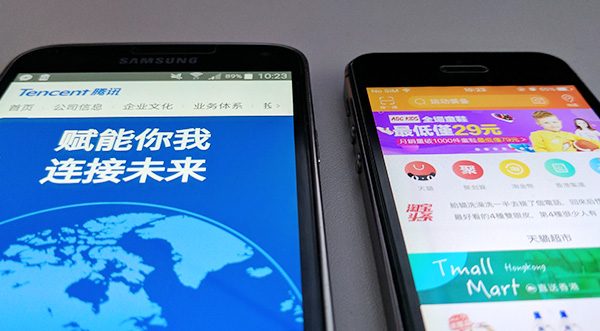Clash of the Titans: Tencent, Alibaba, and the battle for digital dominance in China
September 7, 2020Tencent’s recent introduction of in-app sales for its 600 million or so users marks a step forward for the Chinese digital giant and fourth largest Internet company in the world. But it’s a step into Alibaba’s territory – a company equally dominant in the digital sphere and arguably the largest e-commerce enterprise on the planet. In the fight for digital dominance, there are several key battlegrounds for these industry behemoths.
E-Commerce
When it comes to both consumer-to-consumer (C2C) and business-to-consumer (B2C) online sales, there’s no doubt that Alibaba currently owns the majority of the territory. Taobao is China’s largest C2C shopping site, with more than 760 million product listings and a place in the top 10 most visited websites worldwide. Combined with sister company TMall, the online marketplace for national and international businesses to sell branded goods to Chinese consumers, its gross merchandise volume during 2013 topped $161.6 billion.
Tencent, on the other hand, may be valued at a similar $160 billion, but it has yet to make a direct foray into this area (indirectly, it has an investment in China’s second-largest etailer JD.com). This is where its latest WeChat update comes in, which allows users to post photos of items they want to sell via an in-app dashboard, then have a dialogue with potential customers and manage their orders.
Current Victor: Alibaba
Mobile
While Alibaba claims the lion’s share of the e-commerce space, Tencent comes into its own with mobile. WeChat is the fifth most used smartphone app worldwide, recently doubling the number of its international users to 100 million in just three months.
Its other mobile-based services have also helped to secure Tencent’s position as a household name in the mobile space. For example, QQ instant messenger has more than 100 million users and Dididache Taxi, the cab hailing app, has seen remarkable growth, with 40 million users making more than 700,000 bookings a day.
Commerce aside, Alibaba has yet to match Tencent’s success in the overall mobile arena. However, its recent purchase of UCWeb, maker of one of China’s most popular mobile browsers, suggests that it has plans to change this state of affairs.
Current Victor: Tencent
Social Engagement
Tencent has been in the social engagement business for the last decade, not only through its hugely popular messaging services but also through the development and promotion of massively multiplayer online games via its QQ games portal. Qzone, its dedicated social network, is one of China’s most popular, while QQLive and QQShow allow respectively for peer-to-peer media streaming and a virtual, avatar-based community with its own currency and products.
Alibaba has only recently made inroads to the social side of digital, with the purchase of a significant stake in video sharing business Youku, China’s rival to YouTube. Last year it also announced that it would no longer use WeChat and would instead promote its own messaging service, Laiwang. It has struggled to compete, however, and has recently changed its focus from messaging to encouraging users to join themed groups in an attempt to bolster its numbers.
Current Victor: Tencent
Payments
When it comes to online payments, there’s no doubt about who dominates the field. Alibaba’s Alipay, a third-party online payment platform with no transaction fees, is one of the most popular and trusted online payment mechanisms in China, and works in 12 different currencies with more than 65 banks and financial institutions including MasterCard and Visa. It currently accounts for 48.3 percent of the online payment market.
In 2013 alone, Alipay processed $519 billion worth of digital payments – around three times more than PayPal. Testament to its success, it’s fast becoming a full-service financial product, with savings, investments, and money transfers built in.
While offering many of the same services, Tencent’s TenPay accounts for just 20.1 percent of the market, according to iResearch Global. However, while it cannot currently compete on numbers, innovations such as payments through WeChat are enabling Tencent to move into this territory. With the popularity of WeChat and its widespread adoption as the messaging service of choice in China, it may not be long before the payment playing field becomes more level.
Current Victor: Alibaba
The Real Winner…
It’s clear that both Alibaba and Tencent are devoting time, effort, and cash to improving, developing, and delivering digital services to their users. The business rivalry between them has led to more creative approaches, technical innovation, and increased speed to market for new initiatives. This means, of course, that there’s one clear winner in all of this – and that’s the user.
Elisa Harca is the regional director of Red Ant Asia.

